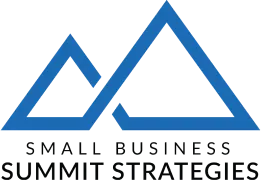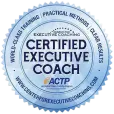
Visionary Leadership
“To foresee a victory which the ordinary man can foresee is not the acme of skill.” — Sun Tzu
This morning, I was reading The Art of War, Chapter 4, and came across the story of Han Hsin. His strategy seemed absurd—his own generals doubted him, and the Chao army mocked him for positioning his troops with their backs to the river. But Han Hsin saw what others couldn’t. His soldiers, with no path to retreat, would fight harder. His enemies, blinded by overconfidence, would underestimate him.
Here’s what I took from it: success often comes from seeing opportunities others overlook and having the conviction to act on them. Visionary leadership isn’t about playing it safe or following the crowd—it’s about having the courage to execute bold strategies, even when others don’t understand them.
Most People Only See the Obvious
Ordinary thinking leads to predictable strategies. When businesses stick to the same well-worn paths, they rarely stand out. Visionaries like Han Hsin see opportunities where others see risks or impossibilities.
Example: Hearthstone Café wasn’t satisfied with just being “a nice place to get coffee.” Most coffee shops responded to the remote work trend by adding more power outlets and faster WiFi. Hearthstone looked deeper. Through customer conversations, they discovered that many remote workers weren’t just seeking a place to work—they were seeking connection.
Hearthstone transformed their business. They introduced coworking mornings with intentional seating arrangements to foster professional connections. Customers began collaborating on projects, and the café became a space known for sparking meaningful relationships—not just another coffee shop.
Key Insight: Seeing deeper opportunities often requires looking past the obvious. Some of the best ideas solve problems customers feel deeply but don’t know how to solve on their own.
Challenge: Create a customer journey map. Document your customers’ steps, identify their pain points, and brainstorm one bold solution to address a need they may not even realize they have.
Visionaries Are Often Misunderstood
Visionary ideas often face resistance. Like Han Hsin’s generals, people struggle to support what they don’t fully understand.
The fear of criticism can paralyze business owners, but bold ideas require the conviction to move forward even when others doubt you.
Example: Poppy’s Pastries faced this when introducing their “Breakfast for Dinner” concept. Staff and regulars were skeptical—why mess with the dinner menu? But the owner had noticed a pattern: brunch was consistently their busiest service, and customers frequently talked about craving breakfast foods in the evening.
Instead of pushing the idea forward without feedback, they tested it:
- They added a few breakfast items to the regular dinner menu.
- They piloted the idea one night a week, with themed pairings like “Waffles and Wine.”
- They set clear metrics for success, including average check sizes and customer feedback.
The gradual approach worked. Within a few months, “Breakfast for Dinner” became their strongest weeknight offering.
Key Insight: Misunderstanding and skepticism doesn’t necessarily mean an idea is bad—it’s often a signal you’re onto something bold. Success comes from refining your vision through small, intentional tests.
Challenge: Think of a bold idea you’ve hesitated to pursue because it feels unconventional. Ask three trusted customers or colleagues for feedback, refine the idea, and outline a small-scale test to see how it performs.
How to See Opportunities Others Overlook
Visionary strategies arise from looking deeper—anticipating long-term trends, understanding unspoken customer needs, and identifying gaps others miss.
Han Hsin’s enemies couldn’t predict his moves because he understood the battlefield better than they did. Similarly, successful business owners anticipate shifts in their market before competitors even notice them.
Example: Maple Valley Inn used this same principle to position itself as a leader in wellness tourism. While many competitors rushed to advertise retreats, Maple Valley took a slower, methodical approach:
- They partnered with local yoga instructors and massage therapists to build relationships.
- They renovated part of the inn to create a serene spa space.
- They tested concepts with small events like wellness workshops and nature walks, gathering feedback and building interest.
- They tracked key metrics like guest satisfaction and repeat bookings to gauge demand.
By the time they launched their retreats, they had both the infrastructure and the audience in place. Within a year, their retreats were fully booked, and they became known as a wellness destination.
Key Insight: Visionary strategies succeed when they’re built on preparation, insight, and a deep understanding of emerging trends—not chasing trends for the sake of novelty.
Challenge: Research one trend that’s growing in your industry but hasn’t yet gone mainstream. What steps can you take to prepare your business to capitalize on it?
Calculated Risks Lead to Breakthroughs
Visionary leaders aren’t reckless—they take calculated risks. Han Hsin’s strategy wasn’t reckless—he prepared carefully, understanding both his own troops and his enemies, understanding his resources, and anticipating the enemy’s reactions. Successful businesses take the same approach to risk.
Example: Morning Roast Café wanted to launch a coffee subscription service but didn’t rush into it. They started small, offering the service to their most loyal customers first. Over three months, they gathered feedback, refined the logistics, and adjusted pricing. By the time they rolled out the program to all customers, it was seamless—and it quickly became a reliable revenue stream.
Key Insight: Bold ideas succeed when they’re tested, refined, and executed thoughtfully.
Challenge: Pick one bold idea you’ve been considering. Use this framework to assess it:
- What’s the potential upside?
- What’s the downside if it fails?
- What resources are required?
- How can you test it on a small scale to minimize risk?
Make Visionary Thinking a Team Effort
Vision doesn’t have to come from you alone. Your team interacts with your business and customers in ways you don’t see. Their insights can spark creative ideas if you create space for collaboration. Business breakthroughs often come from engaging the entire team in innovation.
Example: Turning Pages Bookstore fosters innovation by holding weekly team brainstorming sessions. One idea that came from these meetings was “Books and Bites,” a partnership with local restaurants. Customers who attended author events at the bookstore received dining discounts, extending their experience beyond the store. This initiative drew new customers, strengthened local partnerships, and became a community favorite.
Key Insight: Visionary thinking thrives when your team feels empowered to share and implement ideas.
Challenge: Host a team brainstorming session. Focus on a specific challenge, like improving foot traffic or enhancing customer loyalty. Ask each team member to propose one bold idea and select one to test within the next month.
Measure Visionary Success Differently
Visionary ideas don’t always pay off immediately. The key is to figure out how you can make sure you’re on the right track by finding metrics that matter, even before the profits appear.
Example: Tracking guest satisfaction surveys showed that wellness retreat attendees were overwhelmingly happy. Social media engagement around wellness posts grew by 40% and repeat bookings from retreat guests increased steadily. Within a year, retreats became fully booked, and the inn was able to charge premium rates.
Key Insight: Long-term success is built on metrics like customer loyalty, differentiation, and sustainable growth—not just immediate revenue.
Challenge: Define one long-term metric that aligns with your vision, like repeat business, referrals or customer satisfaction. Track it monthly and identify one strategy to improve it each quarter.
Your Next Steps: Acting on Vision
“To foresee a victory which the ordinary man can foresee is not the acme of skill.”
Visionary success comes from seeing what others miss and having the courage to act. Whether it’s identifying an unmet need, testing a bold idea, or preparing for an emerging trend, the key is to balance vision with preparation.
Here’s what to do next:
- Identify one area of your business where you can challenge conventional thinking. Brainstorm a bold, innovative idea to test.
- Research an emerging trend and outline steps to position your business ahead of the curve.
- Engage your team in problem-solving by asking for unconventional ideas. Choose one to implement and track its progress.
Great leaders don’t wait for opportunities to come to them—they create them by seeing what others can’t. When you prepare, test, and execute with clarity, you’ll position your business for extraordinary success.




